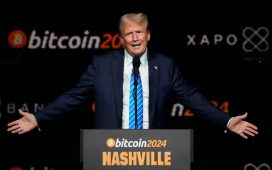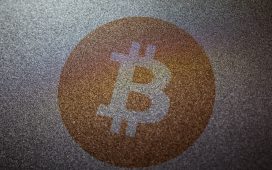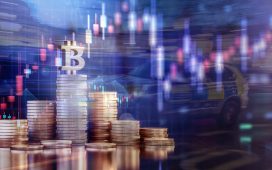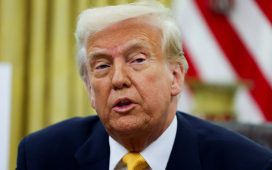Hello and welcome to the latest edition of the FT’s Cryptofinance newsletter.
If you hadn’t noticed, bitcoin is on a bit of a tear this month.
Its 16 per cent gain in December alone takes the gains for the year to more than 160 per cent and the $44,000 price was last seen 20 months ago.
Like Dorothy discovered in The Wizard of Oz, it was all a dream. The crashes, corporate failures, criminal charges and lawsuits that piled up on crypto in that period suddenly seem a distant memory.
People such as Sam Bankman-Fried and Changpeng Zhao are no longer the top bosses but seen as the old guard on the way out and associated with past crimes and misdemeanours.
Around the industry the confidence is tangible. Want to invest in a bitcoin private credit fund run by a start-up backed by Sam Altman? How about buying a crypto fund that is trading at as much as eight times its underlying value?
The tide is carrying in the future, in the form of a spot bitcoin exchange traded fund in the US. Mistakenly or not, the expectation is that it could come as soon as next month.
There is one unheralded aspect to this latest rally: the influence of Asia. The region has not been as forceful in clamping down on bad behaviour as the US.
For example, both South Korea and the US want to extradite Do Kwon, the entrepreneur behind the $40bn collapse of crypto token TerraUSD, to answer charges. But where South Korea wants to speak to him for allegedly violating capital market rules, the US has charged him with eight criminal counts, including securities, commodities and wire fraud.
“Much of the regulatory crackdown we’ve seen this year has happened firmly in the US. Singapore, Japan, South Korea, they’re more hospitable to crypto,” said Ram Ahluwalia, chief executive of investment adviser Lumida Wealth Management.
“These markets are more speculative, and crypto subsectors like gaming are so much more popular out there,” he added.
So much so that the main sovereign currency that people use to trade against crypto tokens is now the Korean won, not the US dollar.
The won accounts for 41 per cent of the market, according to CCData, up from 24 per cent in September. In the same period the US dollar’s share of the market has fallen from 51 per cent to a tick under 40 per cent.
“The fact that bitcoin broke through resistance in the Asian hours is a testament to how important retail volumes in that region, namely South Korea, are becoming,” said Michael Safai, chief executive at trading firm Dexterity Capital.
“Institutional grabs headlines, but retail flow is the lifeblood of the crypto markets,” he added.
That resurgence is also shown in the market shares of OKX and Bybit, two of Asia’s most popular exchanges.
Volume in spot markets on OKX jumped to more than $71bn last month, more than double October’s $33bn, and a height not seen since May 2022, CCData said. OKX’s monthly derivatives volume also leapt to $659bn in November, up from $429bn in October.

Bybit’s volumes are at a level last seen in February 2022. Last month it registered $56bn in spot volumes while derivatives volumes shot up to $375bn, up from the previous month’s $262bn.

“A lot of crypto’s speculative and retail firepower remains intact in Asia,” Ilan Solot, co-head of digital assets at Marex, told me.
And notably, their gains have come at Binance’s expense. OKX and Bybit started the year with a 4 and 1 per cent and Binance on 55. Now OKX has 8, Bybit 6 and Binance just 31 per cent.
“Wall Street’s crypto embrace doesn’t just buoy institutions, it can reignite retail, including in other parts of the world, it’s like a positive feedback loop,” Solot added.
What’s your take on bitcoin’s recent rally and Asia’s role in crypto markets? As always, email me your thoughts at scott.chipolina@ft.com.
Weekly highlights
-
Late on Thursday a US judge ruled that former Binance chief executive Changpeng Zhao will remain in the US until his sentencing, which is due to take place in February. The judge said that, while Zhao offered a significant bail package, it was “inadequate to ensure [Zhao’s] return when considering the vast resources and assets at his disposal”.
-
Kristin Johnson, commissioner at the US Commodity Futures Trading Commission, said the hefty $4.3bn penalty levied against Binance should serve as a warning to others. Speaking at the FT’s Crypto and Digital Assets Summit, Johnson said: “Take the hint, you could save yourself a lot in any number of different ways.”
-
France’s third-largest bank Société Générale this week launched trading of its EUR CoinVertible stablecoin on crypto exchange Bitstamp, becoming the first major bank to launch its own dollar-pegged token on a crypto exchange.
Soundbite of the week: You want answers?
At the FT’s crypto summit on Tuesday I spoke to Richard Teng, Binance’s new chief executive.
He’s been in the role for just over two weeks since CZ stepped down as part of the DoJ settlement and has promised that Binance will learn from past mistakes. He’d also stressed that users should feel confident in the strength, safety and stability of the exchange.
With this pledge in mind I asked the Binance chief some of the questions that have dogged the company in recent years, like where its company headquarters is or the status of an audit. Sadly, those questions still remain unanswered. At one point he said:
“Why do you feel so entitled to these answers?” And: “Is there a need for us to share all of this information publicly? No.”
Data mining: Hungry for more
A decent indicator as to the durability of a rally is whether investors are buying a lot of something.
Numbers shared by CCData suggest that may indeed be the case. Average weekly trading volumes across 25 of the top digital assets investment products, such as the Grayscale Bitcoin Trust or ProShares Bitcoin Strategy ETF, have hit the $3bn mark twice this quarter.
Volumes are also showing some consistency and have sat comfortably over $2bn for four consecutive weeks, which suggests some real appetite out there.

FT Cryptofinance is edited by Philip Stafford. Please send any thoughts and feedback to cryptofinance@ft.com.










